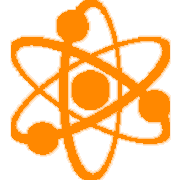High School Science
 (PS) Physical Science
(PS) Physical Science
[HS-PS1]Matter
and Its
Interactions
[HS-PS2]
Motion and Stability:
Forces and Interactions
[HS-PS3]
Energy
[HS-PS4]
Waves and
Their Applications
in Technologies for
Information Transfer.
| Prioritized Expectations |
SCI-HS.PS3.04
SCI-HS.PS3.04 Plan and conduct an investigation to provide evidence that the transfer of thermal energy when two components of different temperature are combined within a closed system results in a more uniform energy distribution among the components in the system (second law of thermodynamics).
Clarification Statement: Student Learning Targets:Knowledge Targets
Reasoning Targets
Skills (Performance) Targets
Product Targets
Student "I can" statements are embedded within the proficiency scale. Proficiency Scale (Physical Science)
ResourcesWebsites Vocabulary | ||||||||||||||||||||||||||||||||||||||||
SCI-HS.PS4.01
SCI-HS.PS4.01 Use mathematical representations to support a claim regarding relationships among the frequency, wavelength, and speed of waves traveling in various media.
Clarification Statement: Physical Science/Physics: Examples of data could include electromagnetic radiation traveling in a
vacuum and glass, sound waves traveling through air and water, and seismic waves traveling
through the Earth.
Student Learning Targets:Knowledge Targets
Reasoning Targets
Skills (Performance) Targets
Product Targets
Student "I can" statements are embedded within the proficiency scale. Proficiency Scale
ResourcesWebsites Vocabulary | ||||||||||||||||||||||||||||||||||||||||
SCI-HS.PS4.03
SCI-HS.PS4.03 Evaluate the validity and reliability of claims in published materials of the effects that different frequencies of electromagnetic radiation have when absorbed by matter.
Clarification Statement: Physics: Emphasis is on the idea that photons associated with different frequencies of light have
different energies, and the damage to living tissue from electromagnetic radiation depends on the
energy of the radiation. Examples of published materials could include trade books, magazines,
web resources, videos, and other passages that may reflect bias. Focus is on qualitative
descriptions.
Student Learning Targets:Knowledge Targets
Reasoning Targets
Skills (Performance) Targets
Product Targets
Student learning targets are embedded in the proficiency scales. Proficiency Scale for Quantum Theory (Chemistry)
ResourcesWebsites Vocabulary | ||||||||||||||||||||||||||||||||||||
SCI-HS.PS4.04
SCI-HS.PS4.04 Communicate technical information about how some technological devices use the principles of wave behavior and wave interactions with matter to transmit and capture information and energy.
Clarification Statement: Physics: Examples could include solar cells capturing light and converting it to electricity; medical
imaging; and communications technology. Focus in on qualitative information and does not
include band theory
Student Learning Targets:Knowledge Targets
Reasoning Targets
Skills (Performance) Targets
Product Targets
Student learning targets are embedded in the proficiency scales. Proficiency Scale for Quantum Theory (Chemistry)
ResourcesWebsites Vocabulary | ||||||||||||||||||||||||||||||||||||
SCI-HS.PS4.05
Student Learning Targets:Student "I can" statements are embedded within the proficiency scale. Proficiency Scale (Physical Science)
ResourcesWebsites Vocabulary | ||||||||||||||||||||||||||||||||||||||||||||
